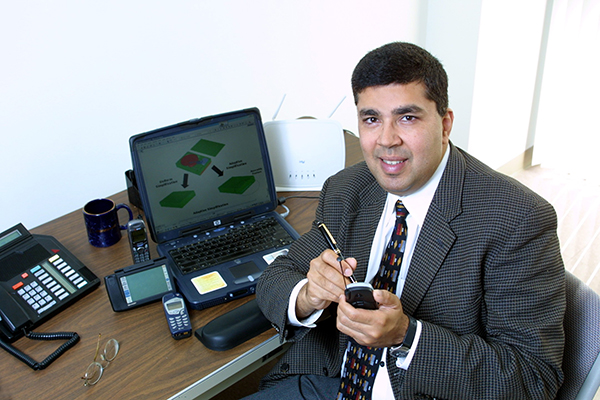MAE Professor Rajit Gadh was quoted in the American Recycler article “Electric and hybrid vehicles will impact auto recyclers“:
Rajit Gadh, PhD, professor, Henry Samueli School of Engineering and Applied Science, at UCLA said that when an EV battery has lived its useful life in a vehicle, it still has several years of life left to be used as an energy storage device to help with grid objectives.
“This is an area that recyclers can easily develop – and they can exploit the massive growth in solar energy on the distribution grid and offer the used EV batteries (also known as second life batteries) as energy storage devices to manage and control the intermittency of energy generation that results from large amounts of solar on the grid,” Gadh said.
When a battery is discarded, it’s often the case that a large number of cells within the battery still have substantial life left, and each cell needs to be tested for potential second life use.
“By replacing a small number of cells, the recycler can extract significant value,” Gadh said. “This should be investigated before they dismantle the battery to break it down to its individual components or try to extract metals such as manganese, etc.”
Jason Vines, an independent communications and government affairs consultant has counseled General Motors on issues surrounding the Chevy Volt. Vines said that electric and hybrid vehicles have given recyclers a challenge due to the volatile batteries. “Remember, vehicles are, and have been, one of the most recyclable products on the planet for more than 100 years,” Vines said. “From my knowledge, the most prolific challenge for recyclers, concerning automobiles, continues to be plastics, incredibly prominent in vehicles for decades.”
Challenges Aplenty
While improvements are being made as described above, costs and range anxiety still represent some of the biggest challenges surrounding electric vehicles. “Also the lack of options for customers, as automakers haven’t fully launched electric/hybrid options for their fleet of vehicles,” Baker said.
Gadh said some additional challenges include:
- Lack of awareness of how EVs can lower greenhouse gases especially when using renewables and wind energy sources.
- Awareness about how EV battery can be a resource on the grid for future of energy storage.
- Potential shortage of lithium, which is the most common element in a battery, as the EV market grows.
- Shortage of public EV charging, workplace EV charging, and EV charging in multi-unit dwellings, as the numbers of EVs grow.
“This is an area we are researching actively,” Gadh said.
Experts say that the potential future growth of the market is the biggest trend for recyclers to be aware of.
“While there is still some time before a major amount of batteries will need to be recycled – likely 10 to 15 years based on the expected lifetime of a battery operation – the industry needs to be ready,” Baker said.
Battery technology innovation is happening at a very rapid pace and battery technology will continue to improve steadily in terms of kwh/volume, kwh/weight, power densities. That will result in EVs of the future being lighter, faster and more efficient than today.
Gadh said battery variations will also be significant as there will be increasing specialization of batteries for different needs such as buses/trucks, cars or bikes/scooters – each having different requirements.
“This means that we will have not only larger number of batteries but also a larger number of variations,” Gadh said. “Almost two decades ago we were doing research on designing products for disassembly – at the design stage itself to enable recyclability of products. Today, recyclers should start to think about working with designers so that the ‘re-usability’ of batteries is part of the design process itself.”

